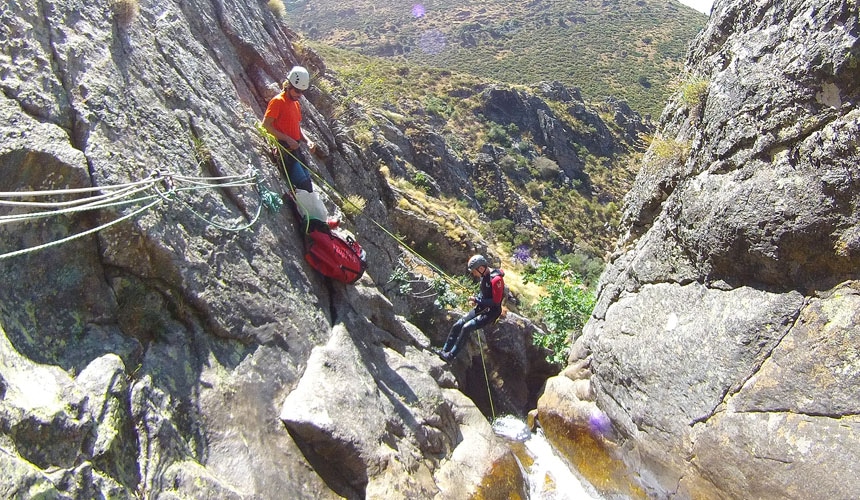
Canyoning Grades used in Spain. Learn How to grade a canyoning route.
Canyoning (“canyoneering” in USA or “barranquismo” in Spanish) is the activity of going through canyons using a variety of techniques including walking, scrambling, jumping, abseiling (rappelling), and swimming. Canyons that are ideal for canyoning are often cut into the bedrock stone, forming narrow gorges with numerous drops, beautifully sculpted walls, and sometimes spectacular waterfalls. Most canyons are cut into limestone, sandstone, granite or basalt. Canyons can be very easy or extremely difficult. A wide variety of canyoning routes are found throughout Spain, and canyoning adventures are enjoyed by people of all ages and skill levels.
The French Grading System
In Spain we use the french grading system for Canyoning activities and routes.
Assumptions
The gradings here assume the following;
-
- An average water flow for the usual season that particular canyon is descended.
-
- A group of 5 people, who have not been in the canyon before, but have suitable experience and skills to descend the canyon.
-
- The level of difficulty is set by at least one of the situations in the table being found in the canyon.
- The jumps are considered optional
Grading
Canyon grading has 3 parts. Difficulty, Commitment and Quality.
Difficulty
The letter ‘v’ (for vertical difficulty) followed by a number from 1 to 7.
The letter ‘a’ (for aquatic or water difficulty) followed by a number from 1 to 7.
The current difficulty numbers only reach 7, but more difficult canyons in the future could require higher numbers.
Commitment
A roman numeral which indicates the commitment and duration of the canyon. I to VI or greater.
Quality
An optional star system indicates the quality/beauty/fun factor of a canyon. 0 stars through to 4 stars.
Examples:
v3a2III**
v1a6I*
v5a5VI***
DIFFICULTY
|
|
V: Vertical difficulty |
A Aquatic difficulty |
|
1 Very easy |
|
|
|
2 Easy |
|
|
|
3 A little Difficult |
|
|
|
4 Difficult |
|
|
|
5 Quite Difficult |
|
|
|
6 Very difficult Exposed |
|
|
|
7Extremely Difficult Very Exposed |
|
|
COMMITMENT / DURATION
|
COMMITMENT DURATION |
CRITERIA |
|
I |
|
|
II |
|
|
III |
|
|
IV |
|
|
V |
|
|
VI |
|
QUALITY
|
No stars |
Canyons that have been descended, but are not really worth the effort required. Included so people searching for new canyons know to discount these streams. |
|
* |
Locally Significant Canyons.Good canyons that are worth the effort required to descend |
|
** |
Regionally Significant Canyons.Canyons of above average quality that are worth returning to several times |
|
*** |
Nationally significant Canyons.The highest quality canyons, with an excellent mix of good access, beauty, fun and challenge. |
|
**** |
Canyons of International significance. (Not used in NZ so far) |

Always practice Leave No Trace ethics on your hikes and adventures. Be aware of local regulations and don’t damage natural parks and wilderness.
DREAMPEAKS: CANYONING IN MADRID. HIKING & ADVENTURE TOURS IN MADRID. OUTDOOR ACTIVITIES IN SPAIN.
